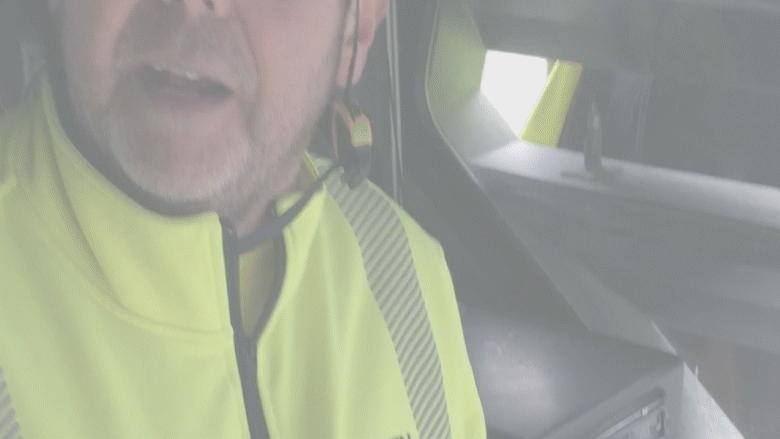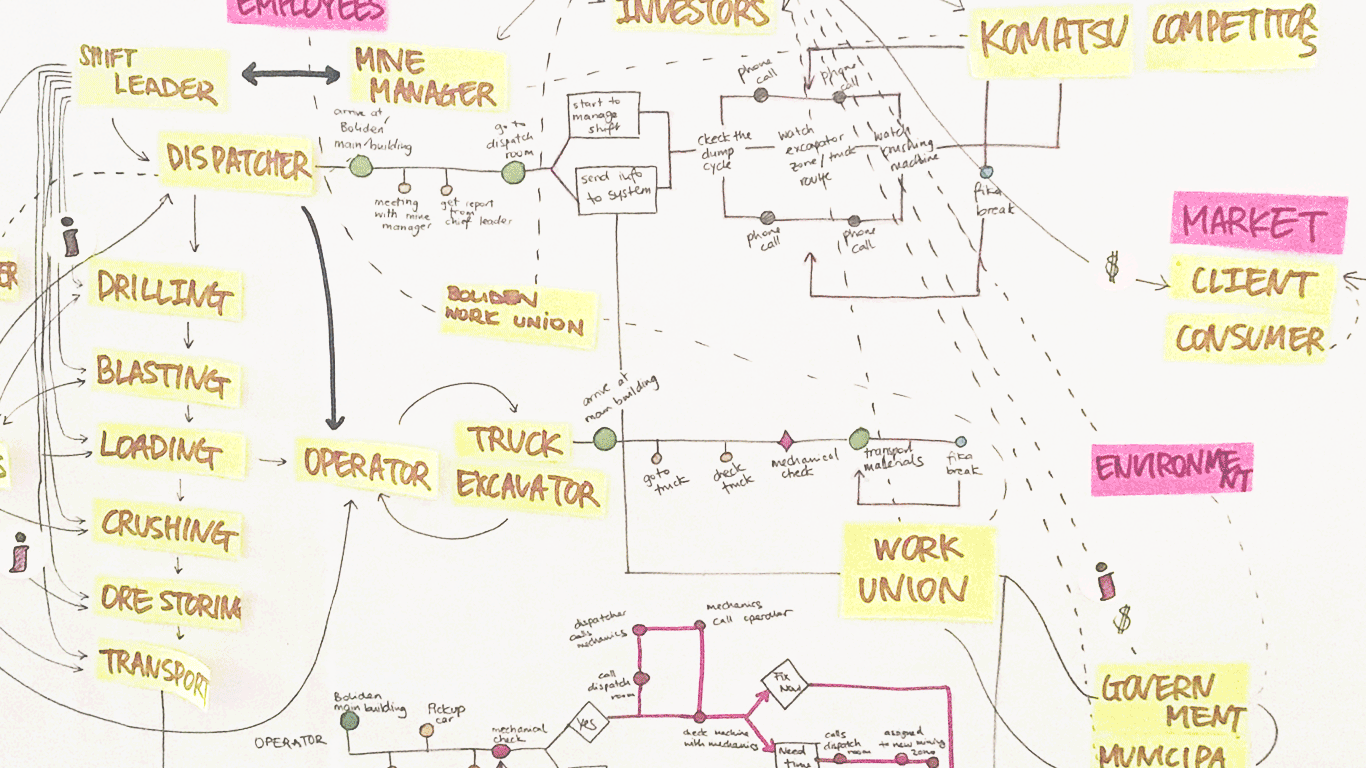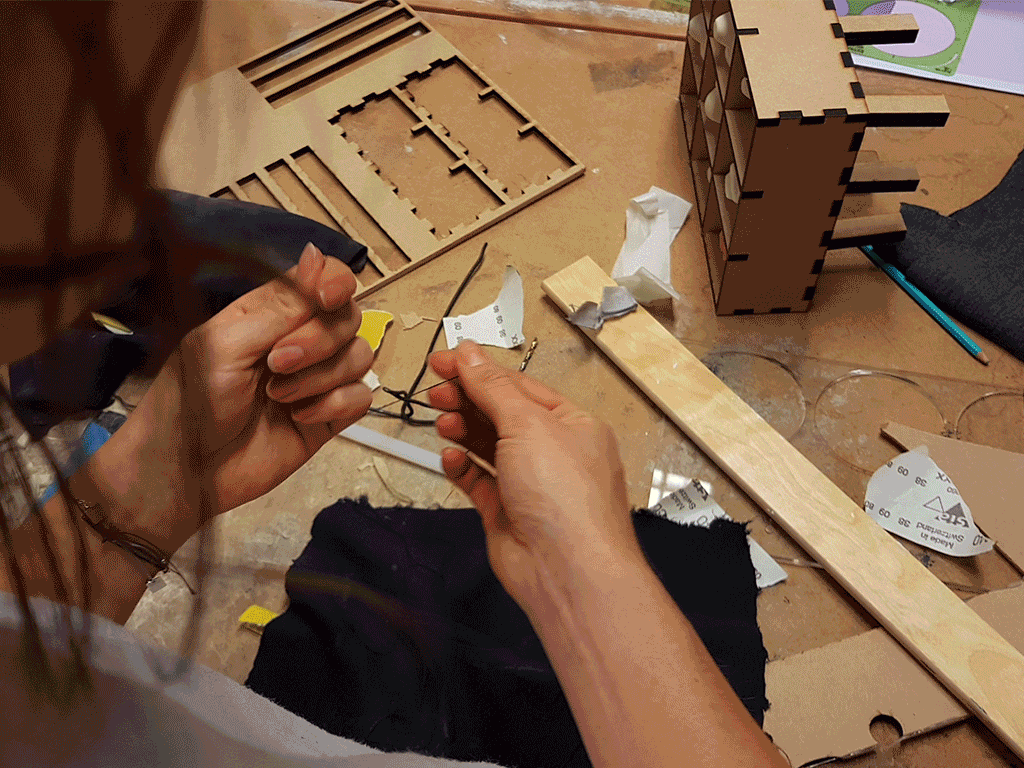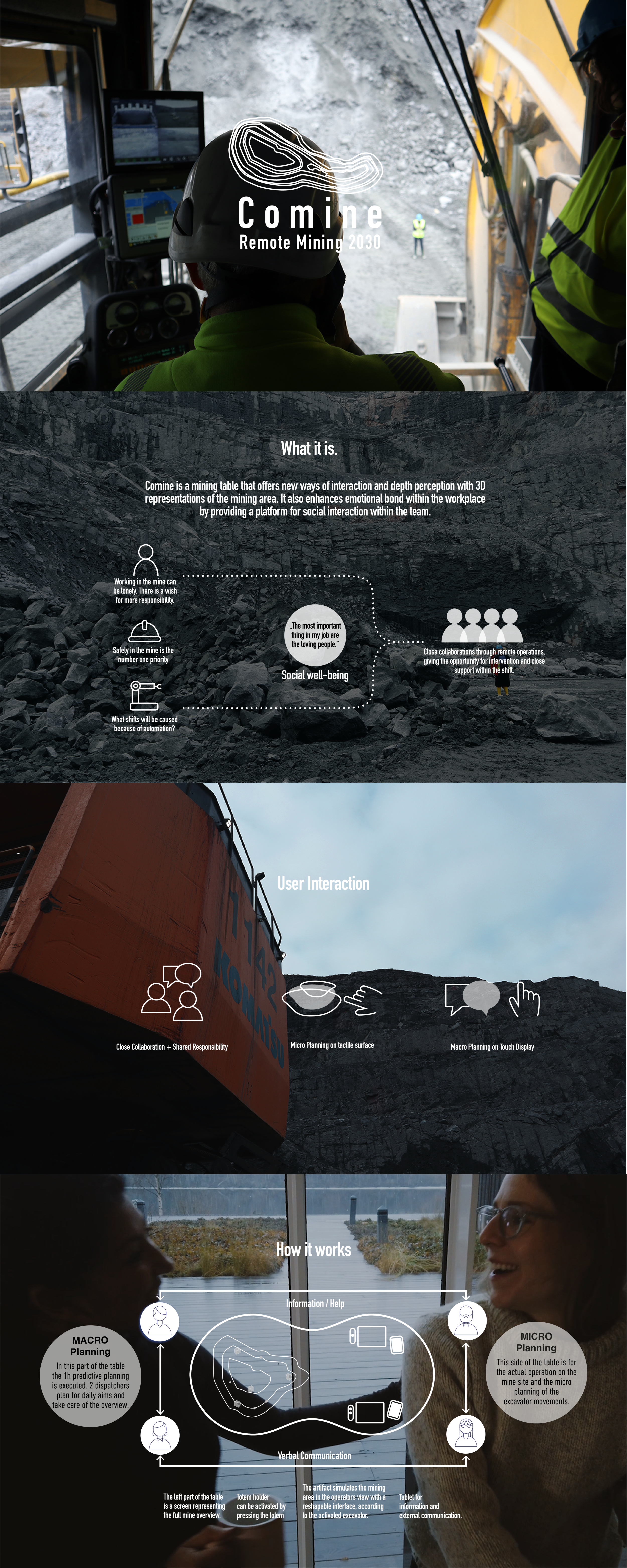
Social Interaction in Tomorrows Remote Mining
Comine, a social interaction mining table with tactile sensation, envisions how the future of remote mining in 2030 should look like. Comine not only utilizes the technological advancements in mining, but also emphasizes the human aspect that should be actively present throughout this automation process via tangible and human to human interaction methods. We interpreted the process of transferring a complex excavating process to a 2D screen by promoting tactile sensation with a physically transferring mining environment.
Course:
Professional Product
2019 (10 weeks)
Type:
Professional Interaction
Remote Work
Team:
So Heum Hwang,
Emil Kongsgaard, Mehmet Ozyoldash
Role:
Field Work, Research, Workshops,
Ideation + Documentation, Modelmaking, Animation
Challenge
We focused on future challenges within the mining field and the related shift because of automation. We were confronted with the question if we rather develop a reality based remote control option or push it to a certain level of abstraction as we also face a skill shift. This skill shift points out to reorganize certain information and also demands for a different approach to the representation of the complexity of information and furthermore shows the necessity of a newly developed skillset in which technology doesn’t become a black box only accessible for a few but where human-machine interaction becomes valuable.
Outcome
As a result emerged a common work space, a table with tactile sensation in an autonomous world. Within this social work environment we aimed for a change of current perception of the mining environment and the work itself. The social context and employee's well-being will was our center of attention. We developed a system in which the working person is supported by an intelligent computer system but working with as much responsibility and cognitive understanding as possible.
Comine’s Components
Process

Field Research
Our field research took place in Gallivare, Aitik Mines, an open pit mine and Kiruna, an underground mine. We had the opportunity to explore the different mine sites and their way of working. Furthermore we visited Oryx Studio in Umeå and talked to Komatsu Forest about their current developments.
It was very exciting to get an impression on what it actually means to work on such a huge scale as in the mine. We arrived there with a very biased picture of what mining and the work in there means as it looks very harsh, rough and cold. This made it even more beautiful to get to talk to the workers and hear how important their team is to them and how much they valua working together with “loving people”, which made it clear to us, that the work they are doing and their well-being at work is related a lot to their social environment they created within it.
„The best thing about my job
Is the loving people.”
Peter, Excavator Operator with a work experience of more than thirty years.
„Correct posture is very important at work. I try to stay healthy in general.“
Stina, Excavator and Truck operator, currently doing office work and mother of three.
„Automation would help me focus on the most important screens.“
Stefan, Dispatcher
Besides the social factors we also could see a lot about the overall process in the mining field, the shift work and the different machines used. As being inside the excavator steering requires a lot of focus and concetration they change position after two hours so the excavator operator has a chance to relax their senses. Operating these massive machines demands sensitivity, operators even have a “rock sense” they use which goes beyond current computer technologies, as Peter explained us. Also weather conditions influence pace and security in their daily work life.
Research Analysis
Story Telling Templates
With all the interviews taken we used Story Telling Templates where each of us could summarize idividually their insights and which were a good foundation to share and compare our findings.
User Journey Mapping
After doing a User Journey Mapping for the individuals we’ve been interviewing we tried to map them together on a mine overview and see where connections are made.
Stakeholder Map + Task Analysis
Within the mining sector there are many departments and stakeholders involved, so it was important to understand how the entire ecosystem of the mining site works. We combined a Stakeholder’s map with a Task Analysis for some of the involved.
Mine Overview + Communication
Understanding how different sections of the mine are connected and how they operate together. Furthermore we analysed how the communication in between these functions and how shifts are connected.
Task Analysis
With the task analysis we tried to look into the different roles more detailed to see the different connections between the professionals. we combined the truck driver, the excavator operator and the dispatcher.
It became very clear that the truck driving process is linear and doesn’t give the opportunity for decision making.
Opportunity Mapping
To gain more knowledge on trends and possible technologies of 2030 we looked into latest developments and predictions. To synthesize our findings regarding tendencies and technologies we mapped their feasibility with the parameters “difficult/easy” and “cheap/expensive” to then see opportunity areas.
Ideation
We conducted a myriad of interviews and filled our holken with numerous ideas.
After some future research on technologies and trends we tried to combine all the valuable findings with “How Might we Questions” and created a heat map with these questions.
We defined opportunity areas and did some brainstorming techniques to find shared interests.
Part of our ideation process was that we created future journey maps. We used the same technique we used to analyize important research insights with the difference that we speculated on different scenarios with the knowledge we gained in our trend research.
“What if machines can be operated from home or in office spaces?”
Our Focus
After a detailed research process, these were the three major points that we found most important to frame our final solution. Having a social work environment, where people can work together closely would mean to keep one of the most important aspects of the current work situation.
Problems within remote control are seen especially when it comes to tactile sensation and depth perception. It currently is a problem that it is difficult to estimate proximity and understand the size of the machines they are steering.
Social Interaction
Tactile Sensation
Depth Perception
“How can we create a work environment, putting the human aspect to the core of our actions, but still adapting technological advancements of autonomous mining?”
Physical Mockups
One of the decisions we made during the ideation phase was to give the table an organic shape, where it feels very natural to move around and enables the professionals to interact also across the table. If working as micro planner it should still be possible to have view on the other part of the table and vice versa.
Shift Scenario
To determine the future work situation we defined what a shift on a shared work table would look like.
MAKING

As part of our process we went through a couple of iteration phase where we ideated and thought with our hands. Meaning we developed fast prototypes to showcase different scenarios of the interaction, understanding how makro and mikro planning can be combined and the professionals and their well-being are kept focus in this proces.
Processing
For the midterm presentation we set up an idea of what the social work environment could look like and how makro and mikro is divided.
Using Littlebits to explain the idea of reshaping mining parts, according to the environment the professional is in.
We started with the idea of having four mikro planning stations, which later became unnecessary and changed into just two.
Another concept of moving the rock environment, playing with different levels of abstraction.





















































